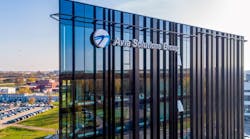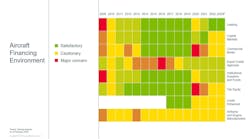Lithium ion batteries have grabbed most of the headlines regarding the world’s leading composite aircraft, the Boeing 787. First, there was the fire aboard the parked JAL aircraft at Boston’s Logan Airport, then the smoke emanating from the batteries of an ANA aircraft that forced the crew to make an emergency landing. And now, most recently, the fire caused by a different type of lithium ion battery in the ELT transmitter of an Ethiopian airliner at London’s Heathrow Airport.
But, notwithstanding these battery-related headlines, most of the concerns in maintenance circles, before these thermal events arose, centered around the difficulty of assessing damage to composite aircraft, much of which might not be visible on the surface, and the specialized training mechanics needed in order to be able to properly assess aircraft damage and make appropriate repairs.
Concerns about the training needed to assess damage to composite surfaces continue. Composite aircraft are still new and their repair histories are relatively short, certainly when compared to aluminum aircraft. A lot of work is being done to help mechanics identify and assess damage to composite aircraft. At this time, mechanics who routinely work on the 787 and other composite aircraft will receive the specialized training they need to help them identify and assess damage from the airlines or repair stations that employ them.
Don't make a wrong call
However, as composite aircraft become more and more common in airline fleets, I am concerned that mechanics who do not routinely work on these types of aircraft will be called upon to make decisions regarding damage that they are not trained to make. For example, a mechanic at an out station is called to look at an aircraft after a ground vehicle has struck it. Or a pilot calls a line mechanic out to look at what appears on the surface to be slight damage. Unless a mechanic is aware that specialized training is necessary, he or she may make a wrong call and fail to identify significant damage just because it is barely visible on the surface.
The only way to avoid problems is for mechanics to be aware that only those people with specialized training in composite damage assessment are qualified to make maintenance decisions on these aircraft. These are situations where mechanics just need to know what they don’t know, to stay out of trouble and keep themselves from making potentially bad decisions.
Damage not just on the surface
Most mechanics know that there is a difference between the way damage shows up on aluminum skinned aircraft as compared to composite aircraft. Evidence of a strike against aluminum skinned aircraft is likely to show up as a dent or other mark; the same strike against a composite aircraft could well leave no mark or a difficult to see mark.
Mechanics who have not received specialized training may not fully appreciate how a slight marring of the surface could hide significant damage below the surface. Unless and until they receive composite-specific maintenance training, my advice is that mechanics avoid damage assessments to these aircraft.
John Goglia has 40+ years experience in the aviation industry. He was the first NTSB member to hold an FAA aircraft mechanic's certificate. He can be reached at [email protected].

